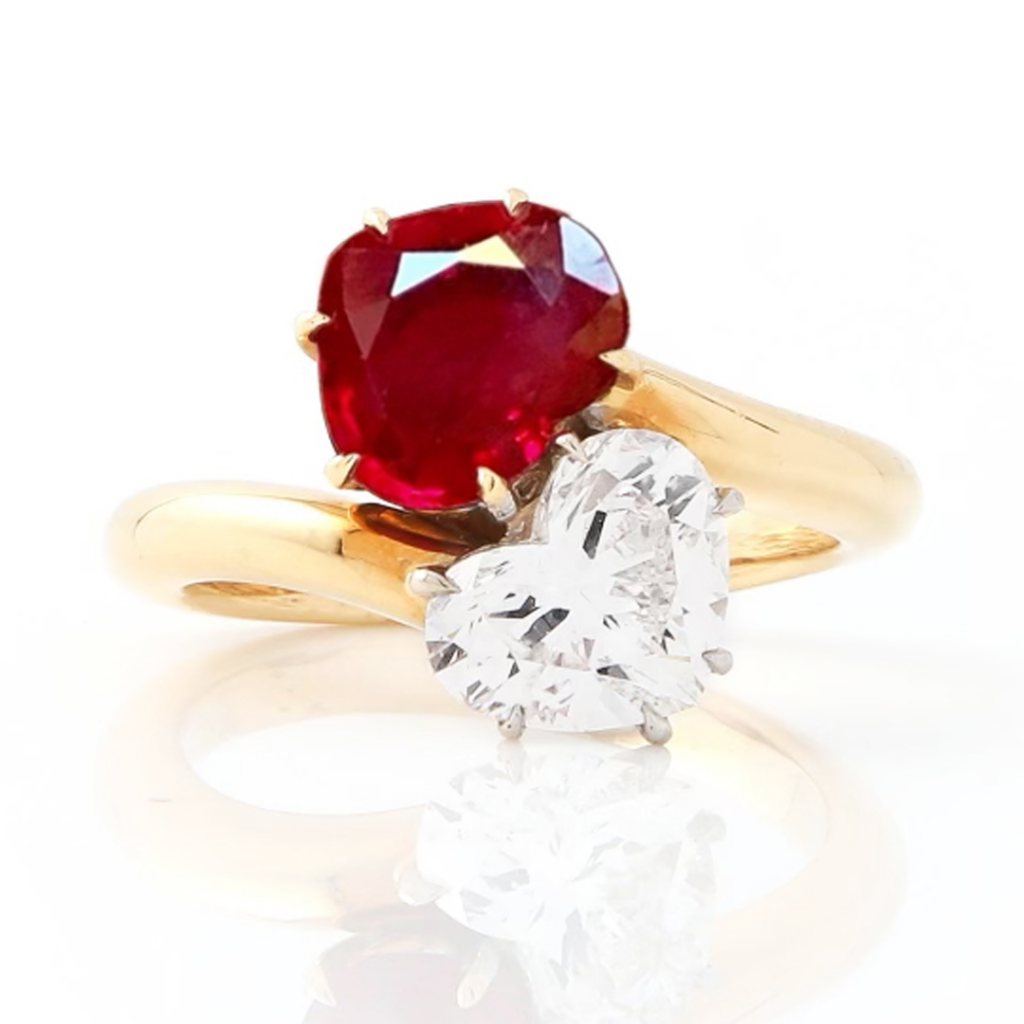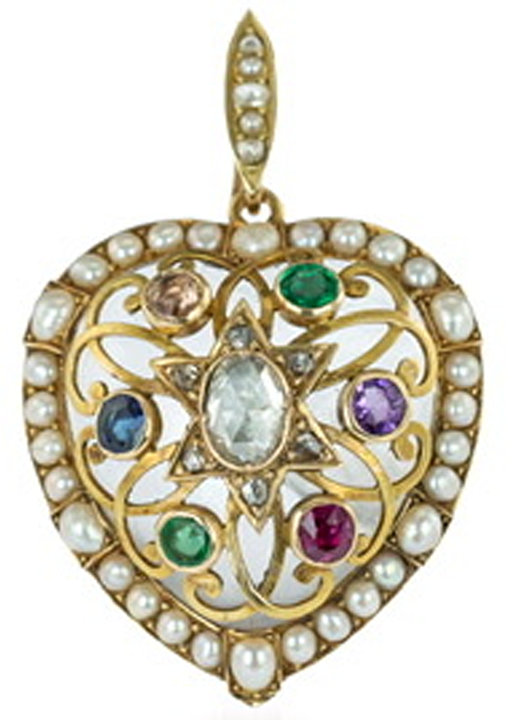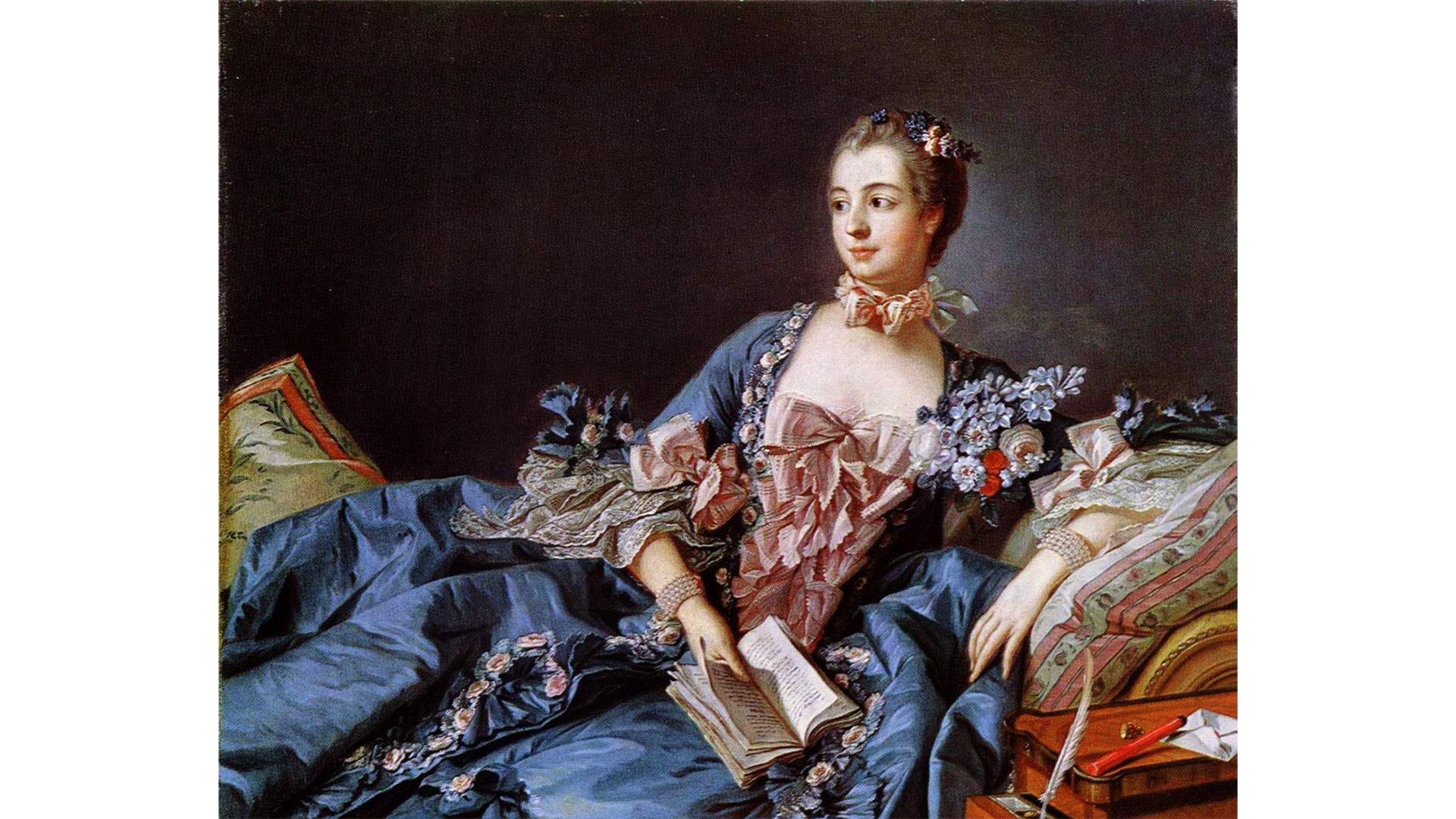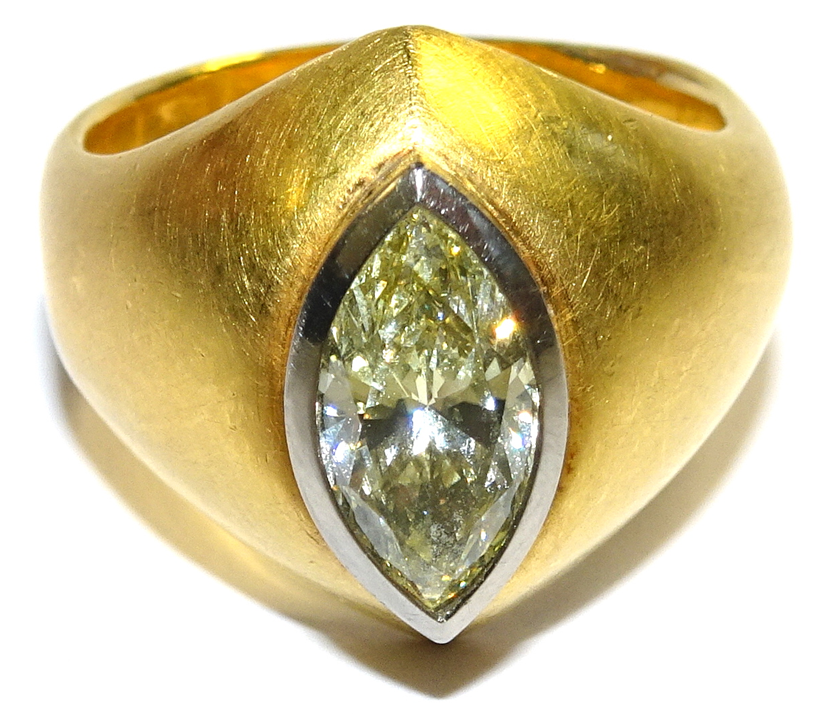From the engagement ring to jewels with secret romantic messages, you’ll find lots of ways to say love and romance with vintage jewelry. While any jewelry gifted for a special occasion can be romantic, certain items were associated with tender feelings for your beloved. The origins and popularity of some of these jewels can often be traced back to royalty and the grand gestures that were made by kings and emperors to woo their lovers. The best part is that these styles remain fashionable today and wearing vintage jewelry treasures is a unique expression of your love story.
Toi & Moi Ring
Toi et Moi, is French and literally translates to “ you and me”. The name is a pretty good hint as to the ring style, which is made up of two stones. Originally, the rings were made with two stones of the same size and shape, but different materials — diamond and ruby, diamond and sapphire, or diamond and emerald for example. The style has evolved over time and now you’ll find Toi et Moi rings with stones in different shapes, or sizes, in the same ring.

So how did Toi et Moi rings reach their popularity? We can thank Napoleon Bonaparte, aka, Napoleon I (1769-1821) for bringing this style into the spotlight. In 1796 Napoleon was passionately in love with the widow Josephine de Beauharnais, who was six years older than he was, which was a very big scandal in that era. Napoleon was part of the Corsican nobility and was expected to marry and produce heirs, so his family was very much against him marrying someone older. Nonetheless, Napoleon proposed to Josephine with a two-stone engagement ring featuring a pear shaped sapphire and a pear shaped diamond and the couple got married weeks later. Josephine was known for her chic style and soon the Toi et Moi ring was on the list of “must have” jewelry for fashionistas of the time. While Josephine already had two children, she was unable to have another child with Napoleon I and the marriage was annulled so that he could marry another and have children. Allegedly, Napoleon and Josephine stayed close even after their separation and they left us with the Toi et Moi ring as a legacy of their grand love affair.
Marquise Diamond
The marquise shaped diamond today is considered to be avant-garde, but the shape has its origins in love. A marquise diamond is round in the center with points on each end; it is sometimes described as an oval with points at the top and bottom. This sophisticated shape came into being in the mid 1700s, when King Louis XV of France (ruler from 1715-1774) asked his jeweler for something special. He wanted a diamond shaped like the lips of his mistress Jean Antoinette Poisson, the Marchioness Madame de Pompadour. She became the king’s official mistress in 1745 and the name of this new at that time shape was a nod to Madame de Pompadour’s noble rank. The two lovebirds stayed together until her death in 1764, but the power couple left us with the marquise shaped diamond as a tribute to their devotion to each other.
Acrostic Jewelry

Acrostic jewelry, also known as Regards jewelry, dates back to the 1700s and the Georgian era, but reached the pinnacle of popularity during the Victorian era. It is jewelry that spells out a word using the first letter of each gemstone in the piece, for example ruby, emerald, garnet, amethyst, ruby, diamond and sapphire spell out “Regards”, one of the most popular words. Other terms of endearment that were frequently used were dearest, dear, adore and love. Most often the words were spelled out in a simple row of stones in a ring, but they could also be in more elaborate ring settings, or in a shape that symbolizes love, such as a heart and they could be in a pendant, bracelet or brooch. Sometimes regard rings were used to mark an engagement, but no matter what the occasion, they were always a sweet bejeweled sentiment.
There are beautiful vintage Toi et Moi rings, marquise shaped diamonds and acrostic jewels to choose that will reflect your personal style. And the legendary love stories that made the jewels popular remind us that romance is always in style.
Featured image (top of page): Madame de Pompadour, oil on canvas, by François Boucher, circa 1750-1758.
Authored by Amber Michelle

